2024 Honda Prologue First Drive Review - A Good Beginning

Love It | Leave It |
|---|---|
Interior quality | No frunk |
Good range | No heated rear seats |
The Honda Prologue is the first – and, as it turns out, the last – Honda to be borne from the quickly aborted Honda/General Motors partnership to develop an EV platform. In the end, the Ultium Electric platform that underpins the Prologue (and the almost identically-sized Chevrolet Blazer EV) is going to be reserved for GM products only going forward, with the exception of the forthcoming Acura ZDX.
Sure; Honda maintains that the partnership isn’t completely defunct, so there could be some pieces that will continue to cross boundaries between the two but as far as a complete platform sharing situation is concerned, it’s probably going to be no dice.
Which is a bit of a shame, because Honda/GM have managed to churn out quite the product with the Prologue and it seems it could just as well have been called “Epilogue”.
Looking Good
Upon approaching the Prologue for the first time, you’re struck by the sheer presence it has. It is a compact-to-mid-size crossover, but it’s got a wide stance, sturdy haunches and in Touring spec seen here, big 21-inch rolling stock (19s are standard); the way each spoke meets the rim gives a very cool 3D effect – as if the centre hub is popping off the rim – which is something I don’t recall seeing before on a factory ride.
Other neat touches include full-width contrast-colour inserts behind the headlights and taillights that are matched by the wing mirrors, door pulls and rocker panels. The way the side windows come to a nice taper rearwards and the subtle flares over the rear wheels combine with a steeply-sloped rear window that almost has the Prologue acting like a crossover-coupe, which is cool. Instead of getting red lenses, meanwhile, the taillights get red bulbs which is another nice aftermarket-like touch. Add silver-coloured skidplates both front and rear and a double-bulge hood and you get an almost Audi Allroad-like look, all chunky and muscular and ready to handle pretty much everything thrown its way, from cracked winter tarmac in urban centres to winding b-roads up to the cabin.
What's Inside
Speaking of cabins – the Prologue gets some high-quality digs inside, if some dashboard lines and digital displays that aren’t all that exciting to look at. That’s kind of a calling card in the Honda world these days and for most consumers it should be no problem as it reduces the chance for distraction or needing to take eyes off the road to hunt doggedly for various controls.
Speaking of the controls: there they are, all aligned neatly below the standard 11.3” infotainment display, nestled above one of the largest exposed storage shelves you’ve ever seen in a car. You could fit about four wallets on there or a half-dozen pairs of shades on there, so it’s good it gets raised edges to keep all of that from sliding off.
Here’s the thing about those climate controls, though; they are the one spot where you can really see the connection with GM. They, along with the battery regen paddle mounted behind the left steering wheel spoke are direct lifts from the GM parts bin. No big deal, but considering how different the Prologue looks from the Blazer EV both outside and in, the effect is that much more jarring.
An obvious difference between the two vehicles when it comes to the dash is how the Prologue gets seperate pods for the central display and the gauge cluster as opposed to the Blazer, which gets a single long pod for both. That display in the Honda, by the way, is the largest the company currently offers when it comes to usable space; the item in the Accord is larger overall, but according to Honda, there’s more usable area on the Prologue’s item.
Whatever the case may be, it is a touch display and it is responsive and gets large, nicely laid-out buttons so it’s all quickly accessible and visible through your peripheral, which is essential when on the move. It also gets standard wireless charging, Apple CarPlay and Android Auto as well as Google Built-In. That means that the native navigation system is Google Maps and there’s also Google Assistant and Google Play. Even if you don’t have a phone on you, the system is still usable and you can access various data by logging in to your Google account.
In addition to the big wheels outside, the Touring tester seen here gets a host of interior adds as well including a full-length panoramic moonroof, heads-up display, 12-speaker Bose audio (a six-speaker unit is standard) and heated and cooled front seats. No heated rear seats, though – that’s a miss – and no digital rear-view mirror, either, which is a common fixture in various GM products, including the Blazer EV. It’s missed in the Prologue because that steeply-raked rear window – cool as it is – does reduce rearward visibility, even more so if you have a pair of tall rear seat passengers. Neither vehicle, meanwhile, gets a frunk – you’d think that kind of thing would be par for the course these days in the EV crossover game but such is the design that the EV motor sits where a gas engine typically would, and that is that.
On the road
Power for the dual motor is rated at 288 horsepower and 333 pound-feet of torque (the US-only single-motor FWD model is good for 212 hp and 236 lb-ft) while range is rated at 281 miles (around 450 km) for the tested Touring AWD model, while the two single-motor models (EX and Touring) are good for 296 km, or about 476 km.
The Prologue’s max charge rate, meanwhile, is 150 kw from a DC fast charger which Honda says will return 65 miles (about 100 km) of range every 10 minutes. A level II 240V home charger, meanwhile, will return about 21 miles (35 km) of range per hour, for a total of about 12 hours to full charge on long range models. You can also plug the Prologue into a standard 120V outlet, but that should only be used for top-ups.
As is the way with EVs, power comes on quickly as soon as you depress the throttle (even quicker and with more computer-generated noise if you’ve selected Sport mode with the press of a button beside the driver’s left knee) as both EV motors begin to churn the wheels. Of course, those motors plus 85 kwh battery means the Prologue weighs in at around 5,700 lbs (2,600 kg) so there’s only so much you can do to defeat the inertia associated with that, so you’ll never confuse the Prologue for a performance EV.
Which is probably no big deal for most considering a purchase in this sphere; they’re much more likely to appreciate the almost subline ride quality and direct, predictable steering. Even the winter-cracked roads of rural Quebec didn’t cause any noticeable cowl shake or jarring steering, even with the big 21” rollers we had. I’ve driven the Blazer EV and the Prologue returns the smoother ride as Honda has tuned the suspension to allow for that. There’s less fore-aft bounce here than there was in the Chevy, and that means a lot especially when traversing repeated bumps and undulations.
In addition to the Sport mode, we find one-pedal driving at the other end of the spectrum. It’s activated by pressing a button atop the central display (Honda promises that button will be larger come production). That not only activates one-pedal drive but also provides a secondary button that allows you to set how aggressive it is from off, to normal, to strong. If you want even more regen once you release the throttle, you can turn to yet another GM parts bin item: the regen paddle on the left of the wheel. Even with the brake pedal depressed, tugging that paddle will slow you down more aggressively still, gaining back as much power as possible.
Final thoughts: 2024 Honda Prologue First Drive Review
We weren’t given a chance in the FWD model, but while the AWD model has the extra power and so on, we think the ride and quiet, comfortable digs – two of the star stats for the Prologue – will manifest there as well. Plus, you get the extra range with the FWD so there’s another arrow in its quiver. Indeed, it harbors a pretty full quiver, this Prologue, and it needs to; Honda is a little behind the times in terms of electrification having discontinued both the Insight and the Clarity recently so they need a hit here. The early impressions are that they’ve got one and we’re looking forward to more time behind the wheel.
Become an AutoGuide insider. Get the latest from the automotive world first by subscribing to our newsletter here.
Fast Facts | |
|---|---|
Single Motor Power | 212 hp, 236 lb-ft |
Single Motor Fuel Economy (USA) | 107 MPGe city, 99 MPGe highway |
Single Motor Range | 296 miles, 476 km |
Dual Motor Power | 288 hp, 333 lb-ft |
Dual Motor Range | 281 miles, 450 km |
Dual Motor Fuel Economy (USA) | 101 MPGe city, 95 MPGe highway |
Dual Motor Touring Fuel Economy (USA) | 99 MPGe city, 84 MPGe highway |
Starting Price USA | $47,000 |
As Tested Price USA | $54,700 |
Starting Price Canada | $59,990 |
As Tested Price Canada | $69,990 |

Dan has spent his whole life surrounded by all things automotive. From volumes of car magazines and books, to boxes of Hot Wheels, he was/is never far away from something four-wheeled and fun. He studied journalism at Centennial College in Toronto and is a board member at the Automobile Journalists Association of Canada.
More by Dan Heyman















































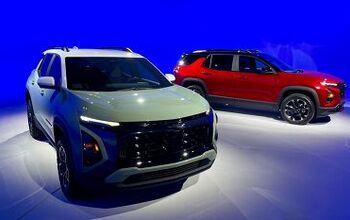
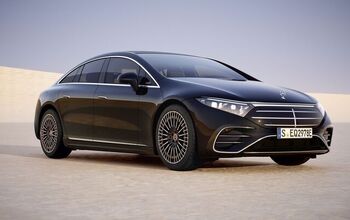

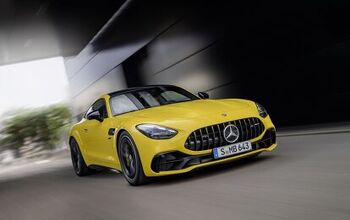

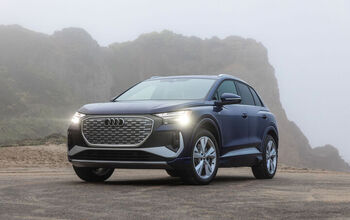

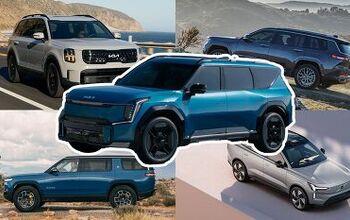

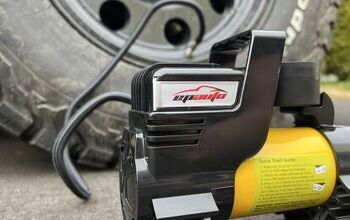



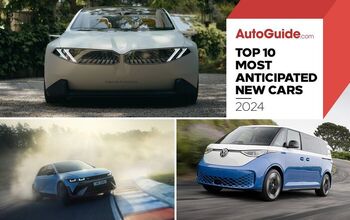

Comments
Join the conversation
I'd rather have a Chevy designed by Honda, if ya know what I mean.